The first generation of the NEMO Dagger instantly topped our list of the best wild camping tents when it first came out. In fact, it was a ‘Best in Test’ pick back in 2021 here at LFTO.
Since then, subsequent iterations improved on the design, notably with the upgrade of the fabrics to NEMO’s proprietary OSMO blend, an innovative mix of 100% recycled nylon and polyester that was not only more sustainable but brought notable improvements in terms of weatherproofing and lifetime durability.
On its release, NEMO claimed OSMO had four times better water repellency than other comparable fabrics, with improved tear strength and less sag when wet (a notorious drawback of silicone-coated nylon tent fabrics).
OSMO fabric is also PFC-free, bluesign-approved and solution-dyed to reduce water wastage, minimising the product’s overall environmental impact.
Where do you go from there? Well, the obvious area to improve was the tent’s structure. The Dagger was already one of the most liveable tents in its class, with excellent internal volume and headroom.
However, the latest version for 2025, called the Dagger Ridge, is even roomier, thanks to updated pole geometry that adds 4 inches to the door height, 2 inches to the peak height, and 22% more usable space to the vestibules. Impressively, these improvements have come without a significant weight penalty.
Pros
- Excellent internal space and headroom creates a genuine 2-person tent
- Good waterproof performance thanks to upgraded OSMO fabric
- Great build quality and premium materials
- Generous vestibules with innovative waterproof Landing Zone
- Lightweight and compact for its class
- Practical features like Nightlight Pockets and one-handed door toggles
Cons
- Not cheap for a three-season backpacking tent
- Inner-pitch-first design isn’t ideal for wet-weather setup
- Slightly narrower than some competitors (127cm width)
- A bit fiddly to attach fly to centre spreader bar
| RRP: | £560 / $499.95 |
| Internal dimensions: | (L x W) 223 x 127cm |
| Peak height: | 109cm |
| Packed size: | 51 x 16cm |
| Trail weight: | 1.9kg/4.8lb 3oz |
| Doors: | 2 |
| Porches: | 2 |
| Design type: | Freestanding |
| Materials: | Fly: OSMO Ripstop (3000mm HH), Inner: 40D nylon/ No-see-um mesh, Floor: OSMO Ripstop (3000mm HH), Poles: DIAPOLE anodised aluminium |
The Dagger Ridge also seems better adapted for use in the predominantly damp maritime climates of the UK and Northern Europe, with upgraded waterproofing (with both the flysheet and bathtub floor fabrics going from 2,000mm to 3,000mm Hydrostatic Head ratings).
The inner tent also now features a higher composition of fabric to mesh, with zippered panels to tweak ventilation as desired. This makes the tent less draughty and warmer in cold conditions.
Rounding out the improvements is the addition of NEMO’s custom Elements hardware, with all-metal corner anchors for one-handed setup and tensioning – a big improvement on the standard Dagger’s somewhat flimsy plastic components.
The tent retains favourite features like the Divvy Cube stuff sack for easy packing, as well as a Landing Zone waterproof storage area in the porch, light-diffusing Nightlight Pockets in the inner, and one-handed Gatekeeper door clips for fuss-free entry and exit.
As such, the Dagger Ridge is well equipped for both relaxed car camping and hitting the trail. Weighing in at under 2kg and with a competitive packed size, it really does seem to do it all.
Shape, structure, pitching, and internal livability

The Dagger Ridge OSMO may be innovative, but the basic shape and structure are by now pretty familiar. Like many other freestanding poled backpacking tents on the market, it uses a hubbed pole system with four corner poles creating arches at the head and foot ends, with an interconnected floating ridge pole in the middle to increase internal volume and headroom.
It takes an already roomy tent to the next level, providing plenty of liveability for two campers. The apex height at the peak is 109cm, which outperforms even Sea to Summit’s outstanding Tension Ridge designs.
In addition, you get generous length with near vertical end walls that ensures plenty of usable space. The floor area is also rectangular rather than tapered to maximise liveability – it’s easy to sleep top-to-tail to optimise elbow room.
There’s only one slight caveat. At 127cm wide, the Dagger Ridge isn’t the widest tent on the market (for comparison, Sea to Summit’s Ikos TR2 is 135cm wide). However, it’s still wide enough to accommodate two 60cm-width sleeping mats.
The two vestibules are also extremely roomy, since they are pitched with double pegging points, creating a trapezoid shape. There’s also a clever volumising stut, which adds useable space and enables the addition of a clever triangular landing zone, providing a dry area for stashing gear.
Even then, there's still enough space elsewhere in the vestibule for a pair of boots and a pack.
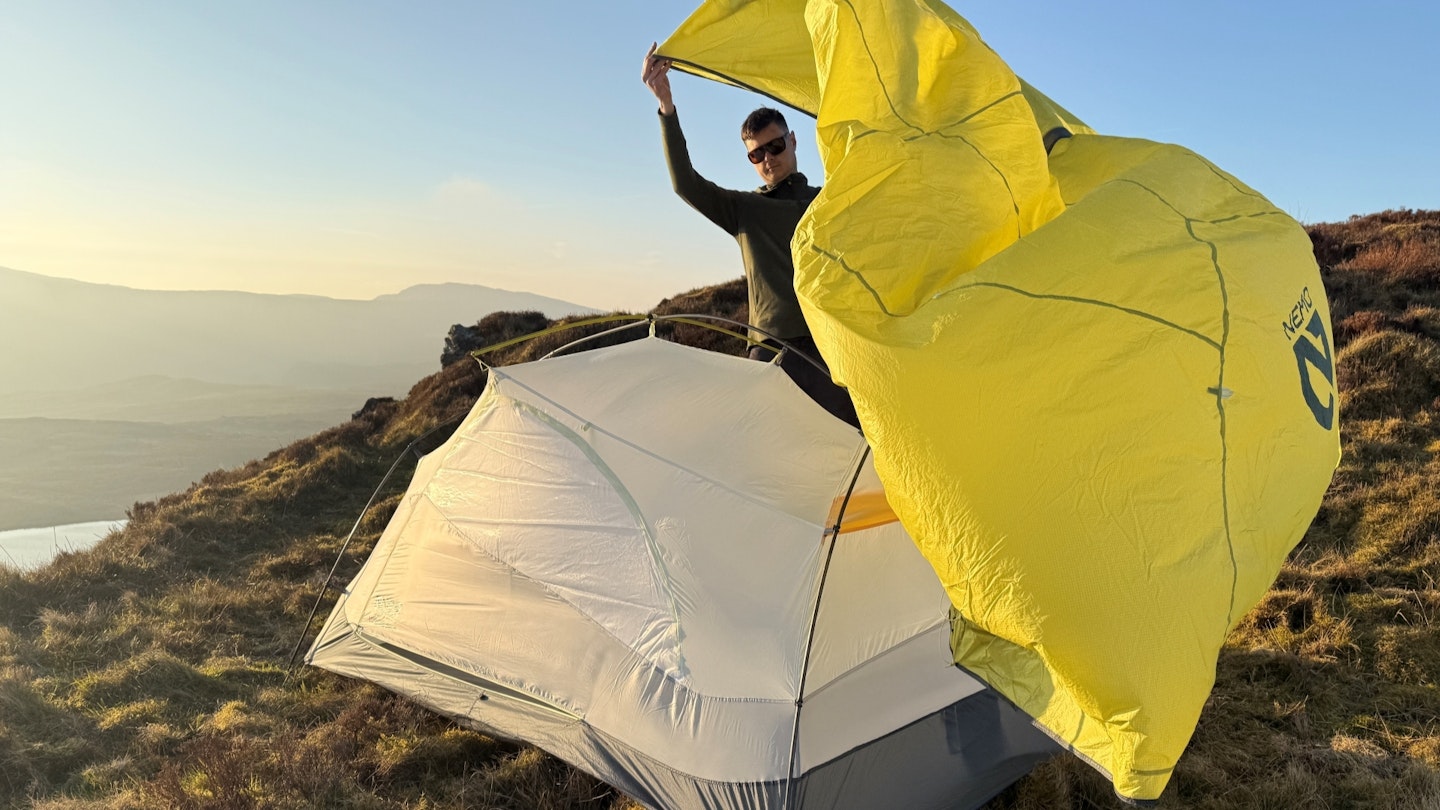
The tent pitches relatively easily, although it is primarily designed to go up inner-first, which isn't so ideal for camping in the rain. However, the hubbed pole set can be positioned quickly and securely into the metal hardware at each corner.
It’s handily colour-coded to make orientation easy. The inner then clips to the pole structure. Then you just throw the fly over the top, remembering to attach it to the central spreader bar via small metal grommets.
This is the only step that is a bit fiddly, especially if pitching solo, as there’s nothing to hold the pole tips in. This means they inevitably tend to fall out before you can get the other end in. It’s something that could definitely be improved down the line.
Webbing straps on the flysheet have plastic buckles at each corner for easy tensioning, which have a clever metal tab that slots into the metal corner feet and twists 90 degrees to lock in place. Getting a taut pitch is a simple affair.
You also get good quality Y-beam tent stakes and guylines (four in total), all fitted with plastic locking runners.
Waterproofing
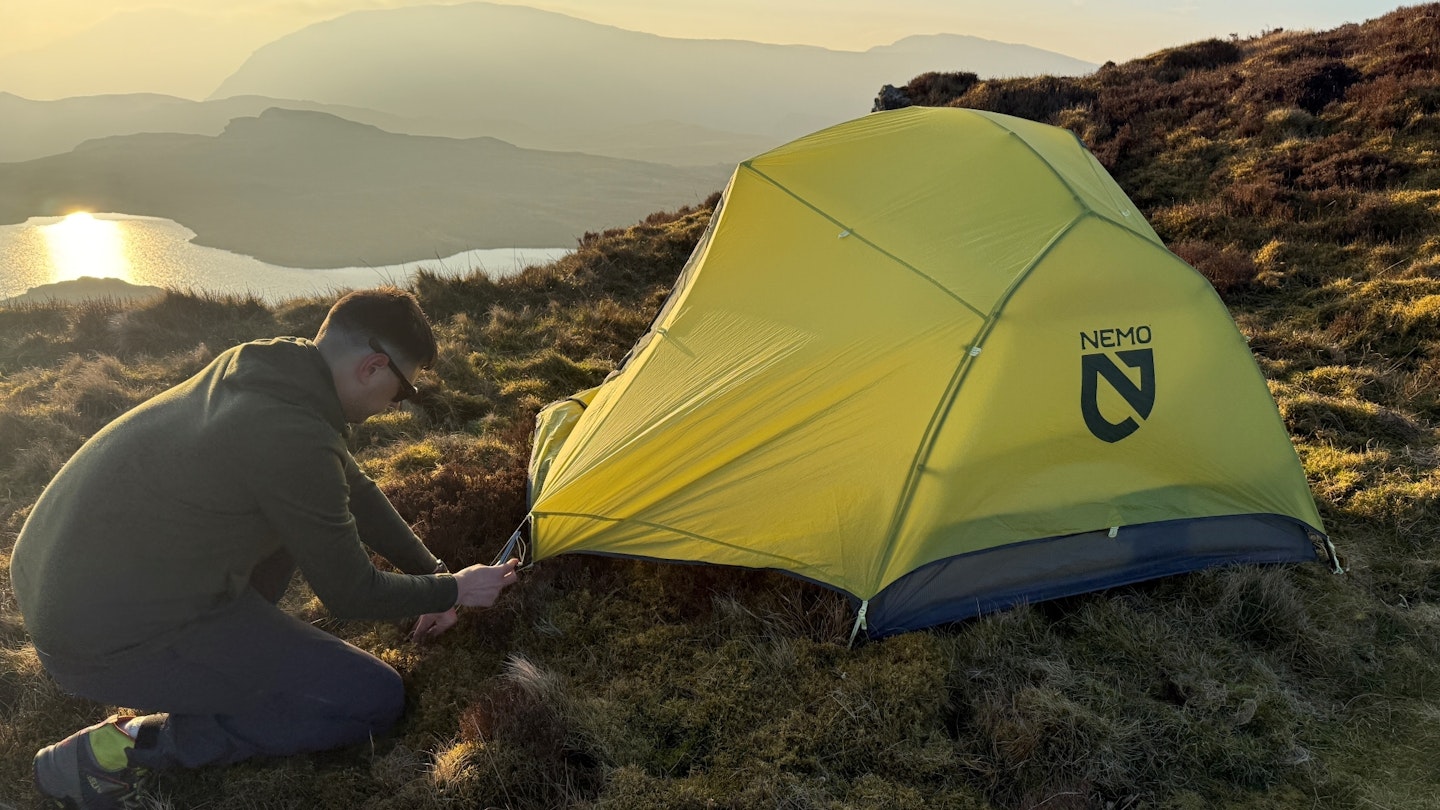
NEMO’s standard OSMO fabric has a waterproof rating of 2,000mm Hydrostatic Head, but the Dagger Ridge has slightly upgraded stats of 3,000mm HH for both the flysheet and the inner tent’s sewn-in bathtub floor. You can also buy a separate footprint for this tent made from 75D polyester (1,500mm HH, RRP £70, weight 203g) which would offer even more protection.
Unless you’re camping on very boggy ground we wouldn’t say this is essential, given the good level of waterproof protection already on offer. It would be a good idea if you might be forced to pitch on terrain that is strewn with sharp rocks, thorns or similar though.
Another big advantage of OSMO fabric is that unlike sil-nylon, it doesn’t stretch or sag when sodden or saturated. This means the Dagger doesn’t need re-tensioning as often as some other lightweight tents, even after sustained downpours. It’s reliably waterproof too.
On test in North Wales, we sat out some pretty heavy rain in comparative comfort, and not a drop of water penetrated the inner.
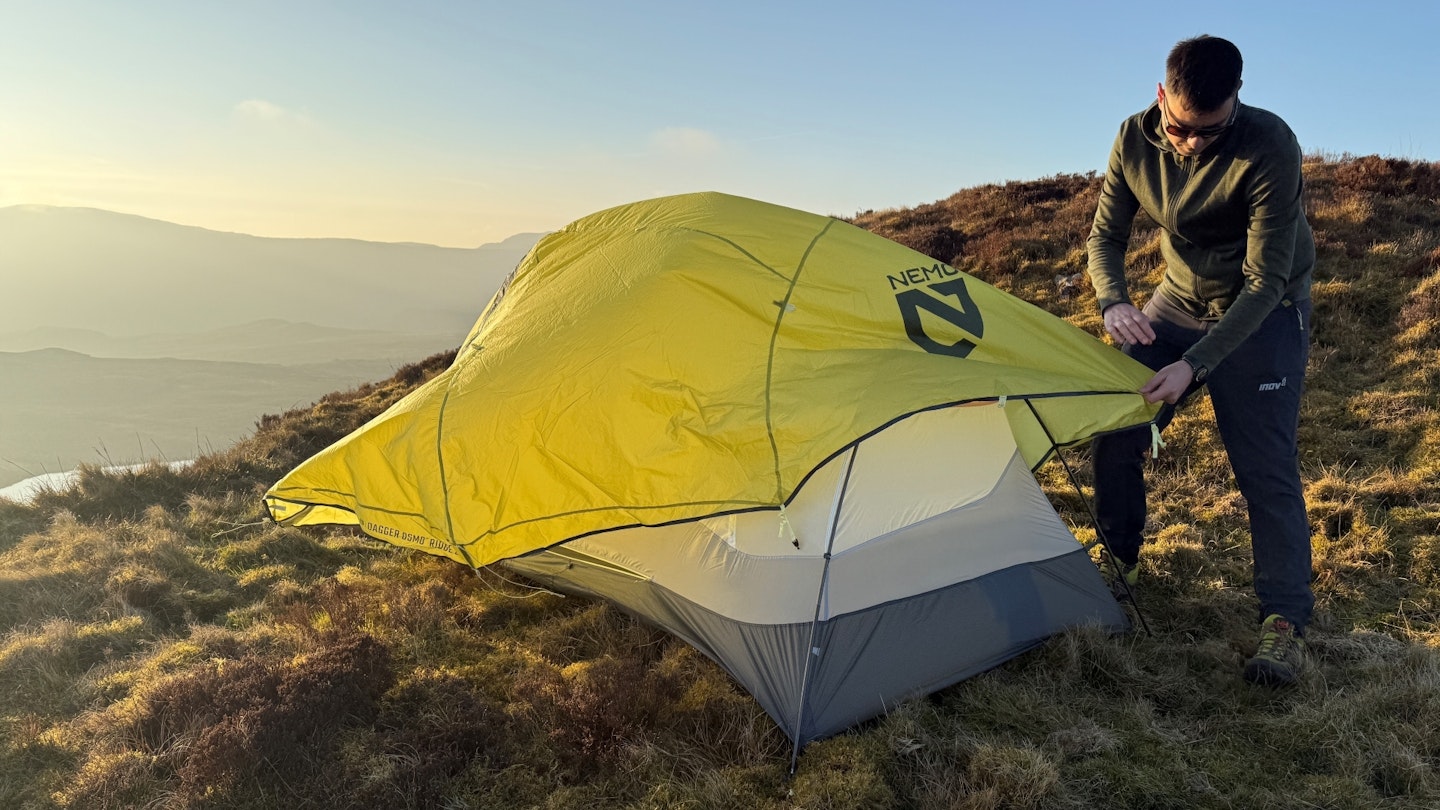
One design feature that initially worried us was the curved ends of the rainfly, which arc upwards at the head and foot, leaving a section of single-wall fabric to fend off driving rain. But these concerns proved unfounded, since the 3,000mm HH rating of the floor fabric and its extended cut provide ample protection.
There’s also an overlap of two inches or so between the lower edge of the fly and the extent of the bathtub floor, so it’s virtually impossible for rain to enter.
And a final note: included with the Dagger Ridge is NEMO’s Landing Zone, a waterproof ‘tub’ that clips to the tent and vestibule to protect your gear from wet ground and seeping rain. It’s a very nice extra to have on truly miserable days, giving you some welcome dry storage outside the sleeping space.
Condensation
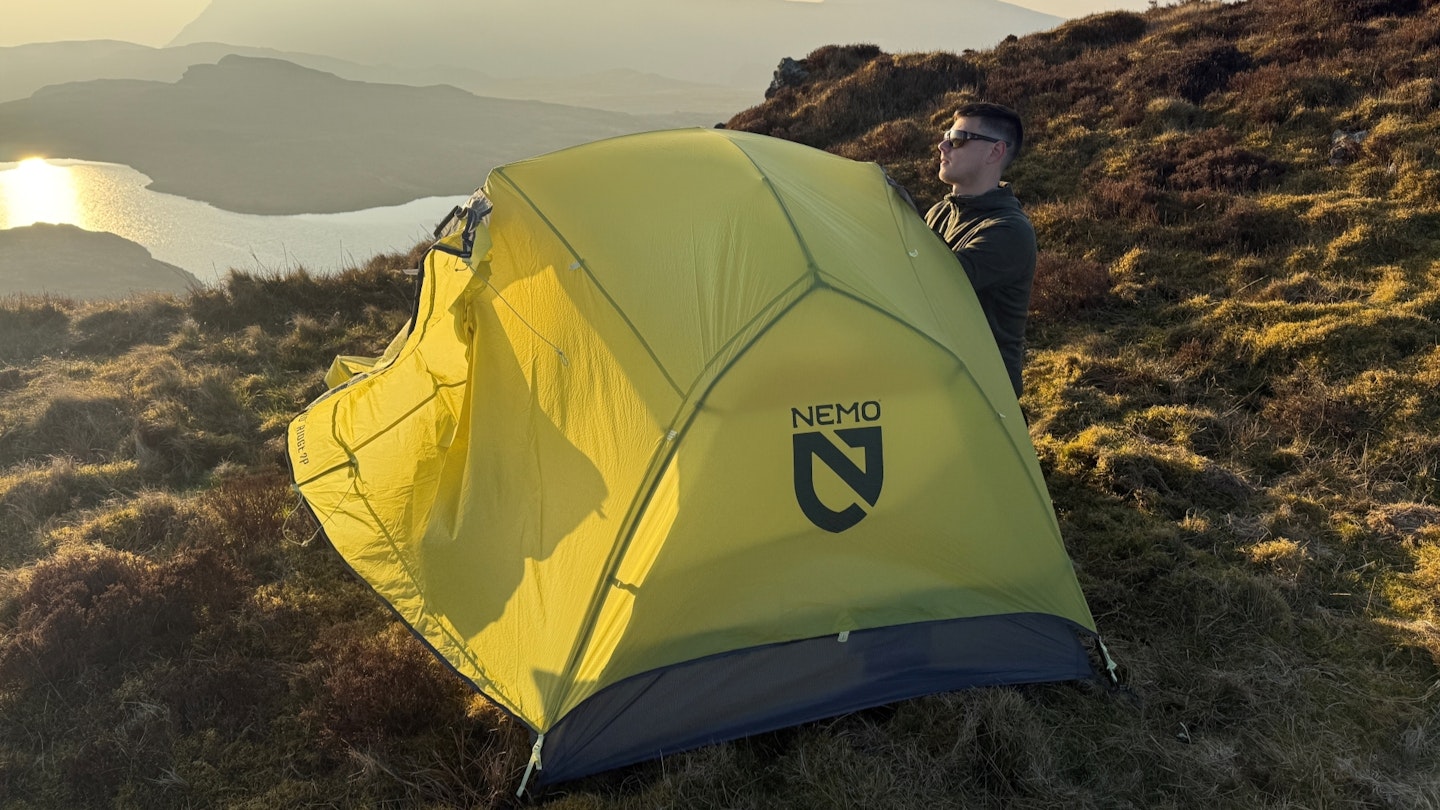
The flysheet doors have two-way zippers with an upper strutted vent that brings extra airflow into the tent. As noted previously, the cut of the flysheet is also curved at the lower edges to extend the tent’s ventilation options.
All in all, it's a functional design, albeit not quite as effective on very humid nights compared to the overhead vents found in rivals like the Big Agnes Copper Spur or Sea to Summit Tension Ridge tents such as the Alto, Telos and Ikos.
The inner is largely fabric, which gives more warmth in colder conditions, though you can improve ventilation on sultrier nights thanks to large secondary double-layer fabric panels in both doors, which can be unzipped to reveal large mesh sections for airflow.
Wind protection
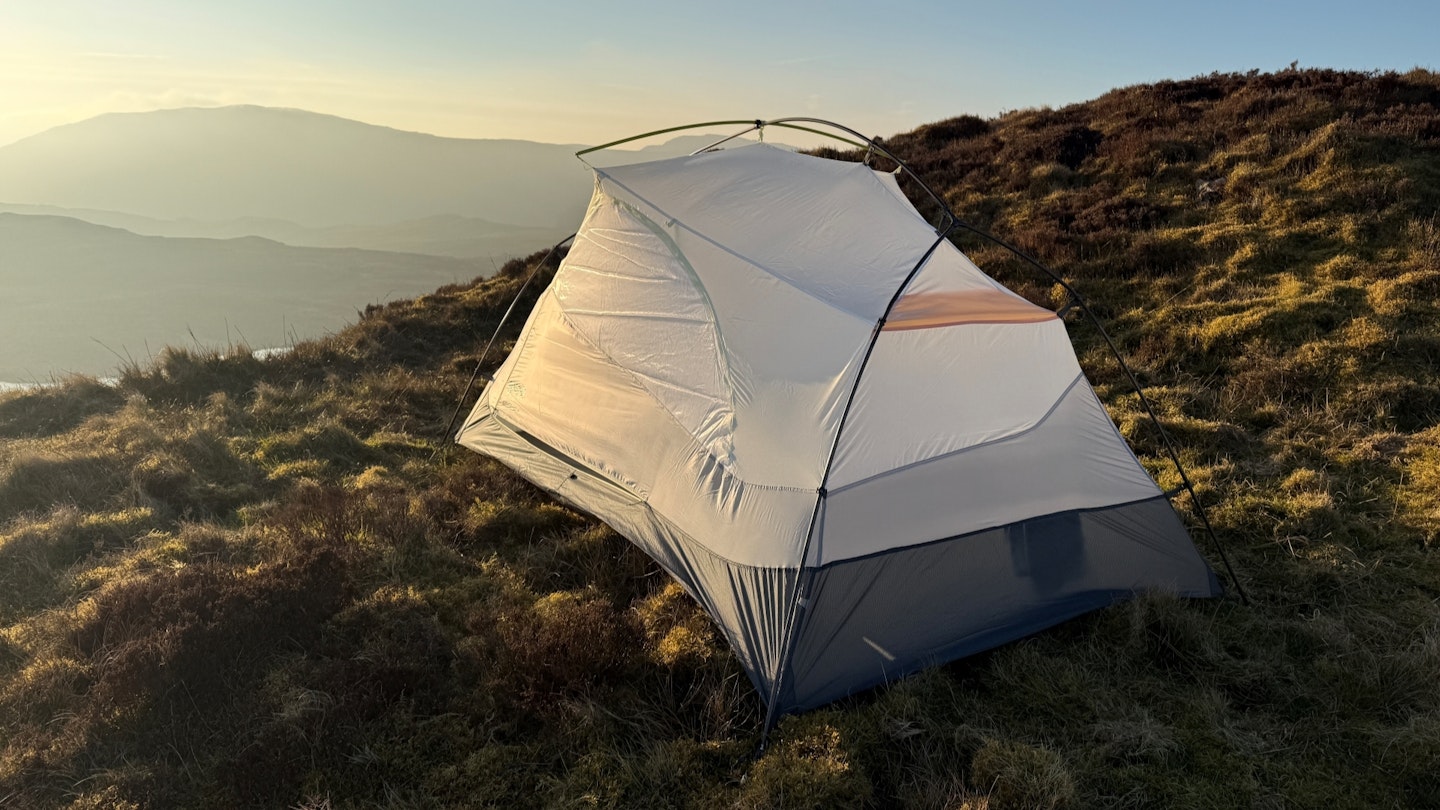
A tent’s stability is largely dictated by its pole geometry, and the Dagger Ridge is pretty sturdy for a three-season backpacking tent.
The pole structure is made from DAC Featherlite NSL alloy sections. These are comprised of a mixture of 9.6mm, 9mm and 8.5mm diameter pole sections, which ensures excellent strength-to-weight and superior performance compared to skinnier 8.5 or 8.7mm pole sets.
On test, we faced some strong winds whilst pitched on a ridge in the exposed Migneint moorland of Eryri, and the Dagger held firm. We had Big Agnes’s Copper Spur UL2 set up alongside the Dagger, which proved considerably flappier and noisier, although it also stayed put.
Of course, the end walls of the Dagger Ridge are near-vertical, which means they are a little susceptible to buffeting. The increased peak and door height of this model also raise the overall profile, which isn’t an advantage in gusty conditions.
Still, careful site selection and positioning should ensure this tent remains a reliable companion for use from spring through to autumn. We’d have no qualms about taking it on a UK long-distance trail or wild camping adventure in these seasons.
Weight and packed size
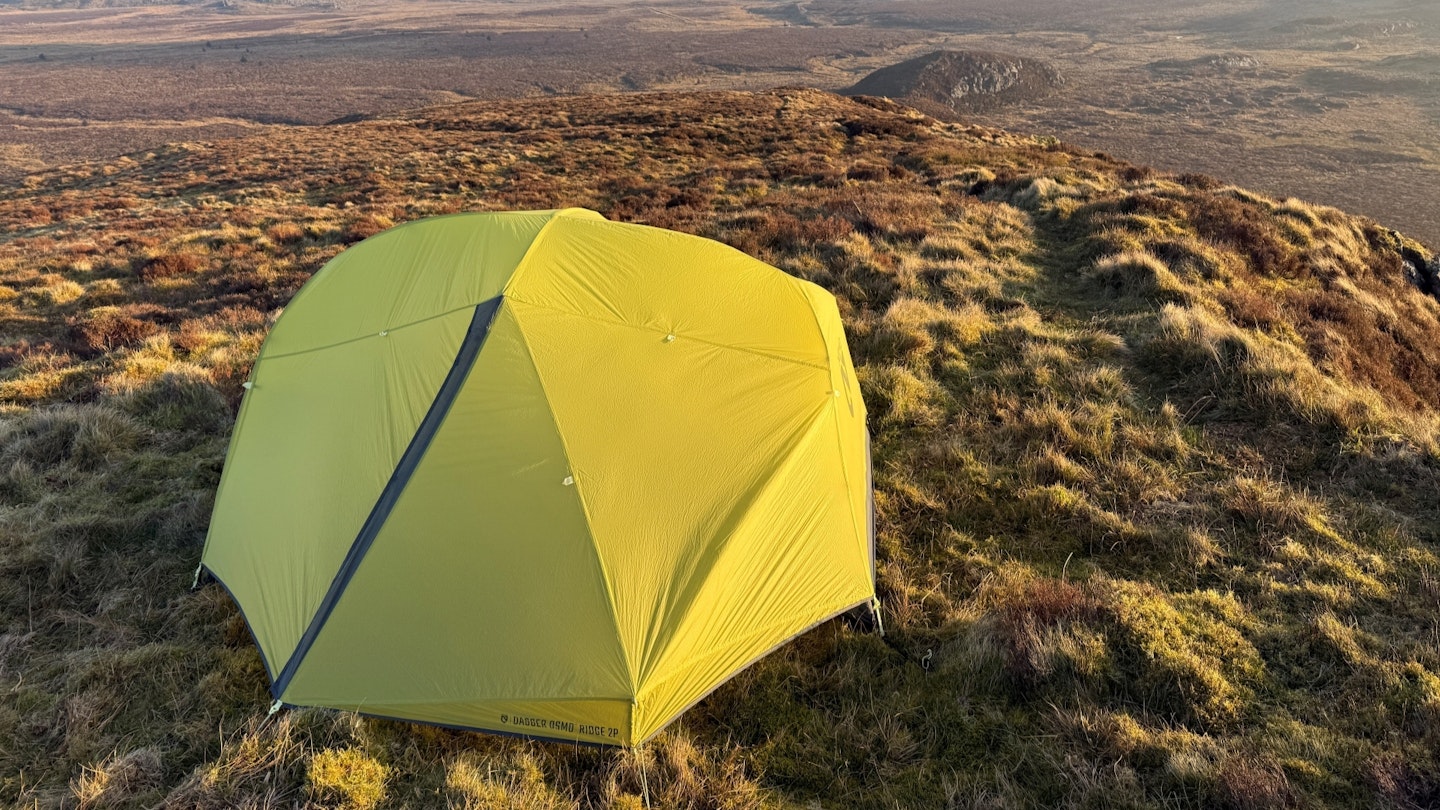
The standard Dagger OSMO 2P is lighter than previous generations, which means the latest model weighs in at 1.78kg packed. The Dagger Ridge OSMO is marginally heavier, at 1.9kg packed (but you’re getting more weatherproof fabrics and more space overall).
This is still lightweight and comparable to direct competitors such as the Sierra Designs Meteor Lite 3000 2P and the Vango F10 Xenon UL2. Admittedly, it’s a bit heftier than the MSR Hubba Hubba and considerably heavier than the Big Agnes Copper Spur UL2 or the Sea to Summit Telos TR2.
You can save even more weight with options like the Big Agnes Tiger Wall UL2 or even NEMO’s own Dragonfly OSMO 2P, but the Dagger is a genuine two-person tent, whereas those models are better suited to 1-2P use (i.e. mostly solo trips with occasional overnights or short excursions with a close friend or partner).
All in all, the Dagger Osmo isn’t ultralight, but comes in under that critical 2kg barrier. It’s certainly not burdensome to carry and offers more liveable space than almost any other double-skinned freestanding tent on the market.
At 51 x 16cm, the Dagger Ridge OSMO's packed size is perhaps a little bulkier than the norm for its weight, price and dimensions. Still, you’ll have no issues fitting it in a backpacking rucksack, even without separating the poles from the main storage sack.
If you do use the Divvy Cube system and remove the tent poles, the Dagger’s roll-top stuff sack can be compressed to two-thirds its normal length and secured via a buckle closure.
Features
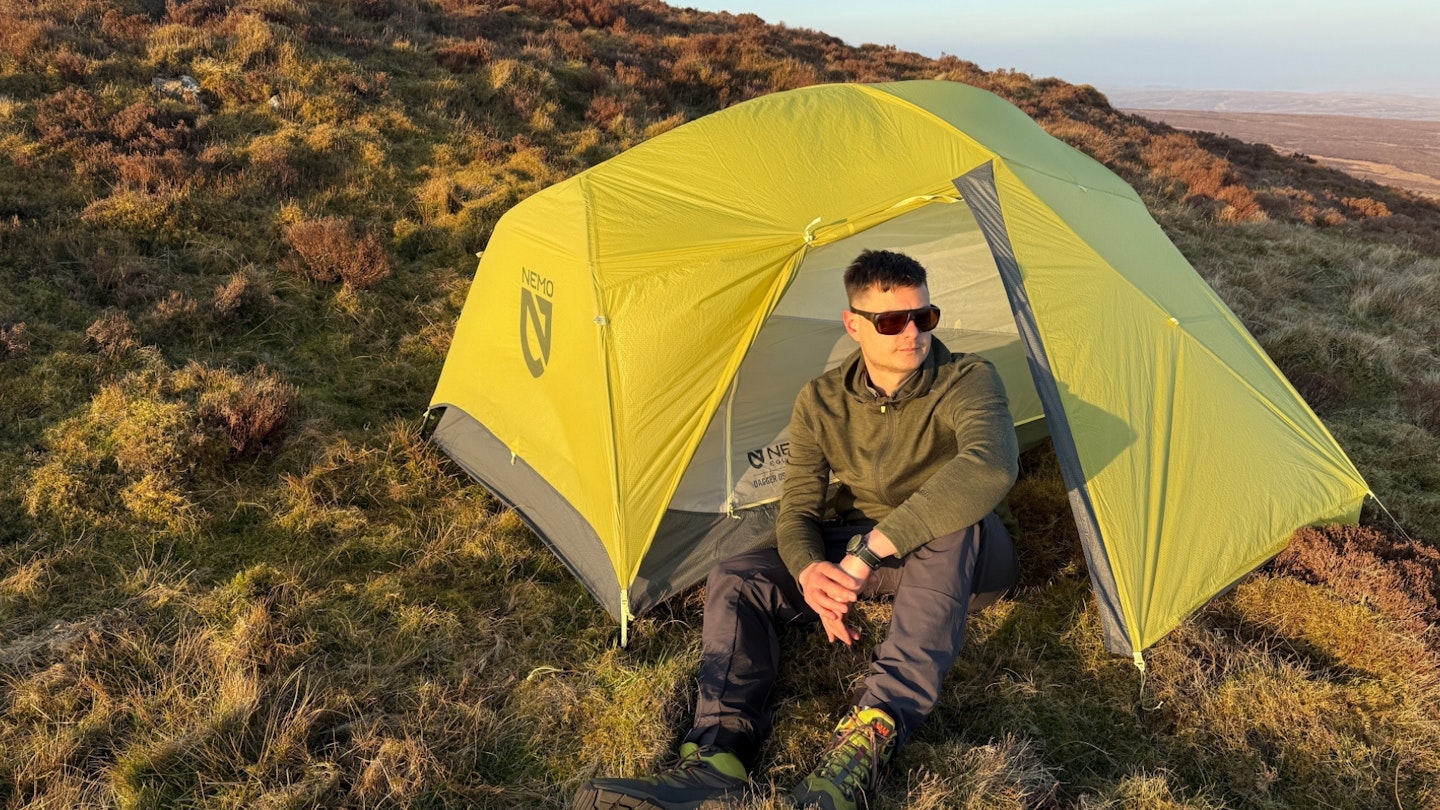
The Dagger Ridge OSMO is a pleasant place to spend the night, whether you’re on a campsite or high in the hills. There are two upper night light pockets in the inner for stashing a head torch, which are placed conveniently at the head and foot ends – ideal for reading at night or studying maps for the next day's adventures.
There are two more small side pockets beside each doorway, though these aren’t as large as those found in some rival tents. That's about the only drawback of the Dagger Ridge OSMO in terms of internal practicality though.
The doorways have extended two-way zips that meet at one corner, so you can always find them at night rather than having to fumble around in the pitch black.
The door panels can be held back with one-handed tie back toggles; a very practical feature. These tie-backs are also found on the fly sheet doors, ensuring fuss-free entry and exit.
Verdict
Strikes an impressive balance between liveability, weather protection and practicality for lightweight backpacking, making it a top pick for three-season use, especially in damp climates. While not the absolute lightest option around, its thoughtful design and high-quality materials make it a versatile and reliable choice for most outdoor adventures.
If you're looking for a bit more room, consider our roundup of the best 3-person tents.
Shop this product
About the author

Matt Jones is a freelance journalist based in the heart of Snowdonia National Park, he’s a vastly experienced gear tester and self-confessed outdoor kit geek. Matt’s been one of our main gear testers for the last couple of years and is the first person we call with any complicated kit queries that need in-depth and forensic analysis.






